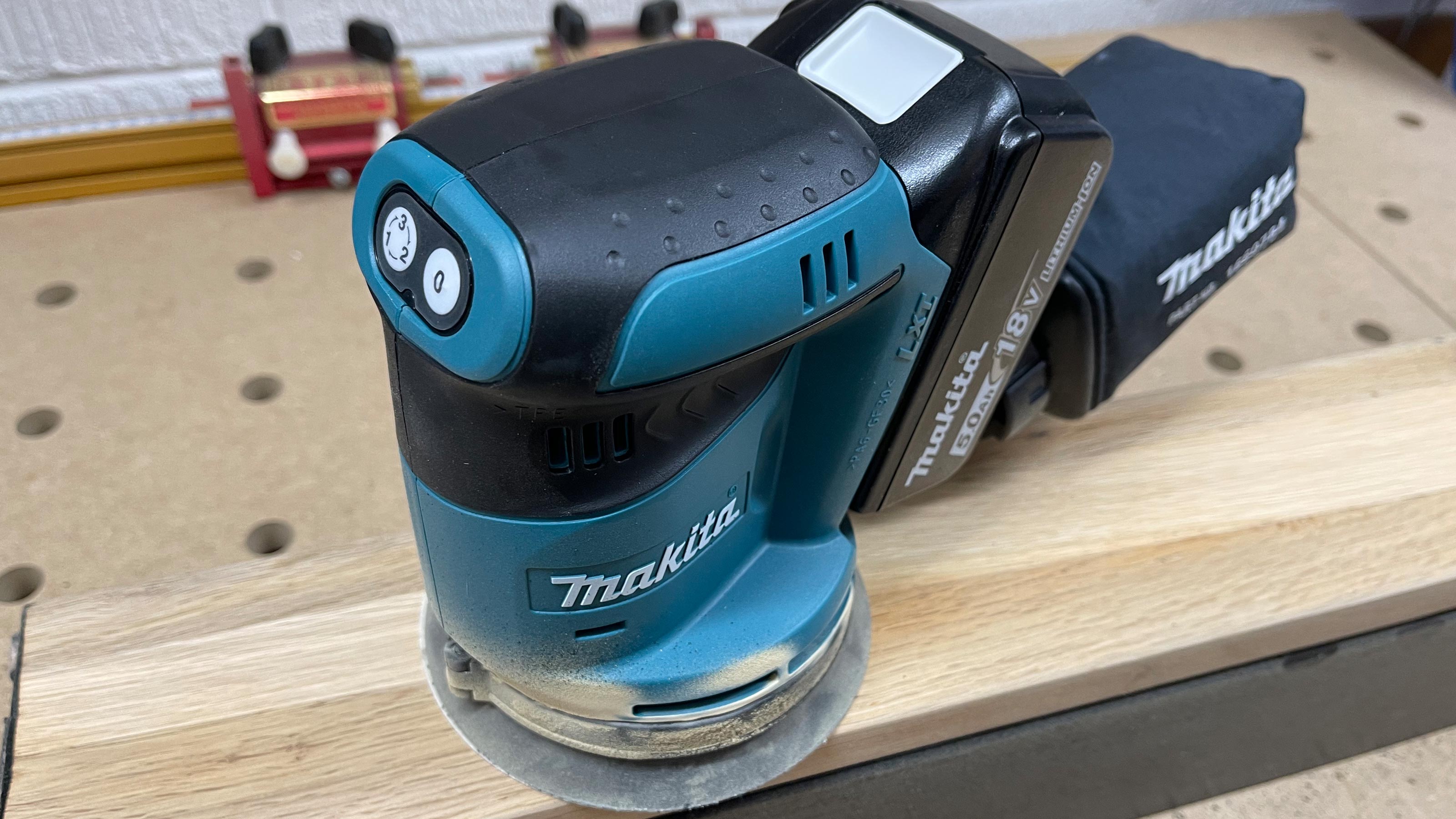Homebuilding Verdict
If you’re looking for a cordless finish sander and will predominantly be using it for sanding horizontal surfaces where it’s not easy to get mains power, this could be the ideal kit for you. Especially if you intend to buy more tools that use the same battery platform. But if you’re mostly sanding vertical surfaces or overhead (looking at you painters and decorators), the overall weight is going to make it tiring to use and I’d recommend that you look elsewhere.
Pros
- +
Easy to handle with rubbery top contour and grooved sides
- +
Short height and low centre of gravity for easier manoeuvrability.
- +
Good vibration control meets HSE standards for 8-hours exposure time
- +
Very impressive battery life
Cons
- -
Not well suited for heavy material removal
- -
Heavy for use on vertical surfaces and overhead
- -
Only one 120-grit sanding disc supplied
You can trust Homebuilding & Renovating.
A random orbit sander works by rotating a sanding disc in a random orbital motion that helps create a smoother, more even finish than can be achieved with other types of sanders. It can be used for sanding of large surfaces of wood, plastic, and metal materials, including those that have been previously painted. Sanding discs of different grits from both course (lower numbers) to fine (higher numbers) are available making the random orbit sander useful in many different roles for pretty much every tradesman, handyman or DIYer.
Here I share my thoughts on the Makita DBO180 cordless 125mm random orbit sander and reveal why its amongst the best orbital sanders on the market.
My first impresssions of the Makita DBO180 cordless 125mm random orbit sander
Type: Cordless Battery Type: 18V Lithium-Ion battery Speed Control : 3 stage push button Orbits per Minute: 7000/9500/11000 opm Orbit diameter: 2.8mm Sanding Stroke per Minute: 14000/19000/22000 spm Paper Fastening: Hook and Loop Pad size: 123mm Paper size: 125mm Vibration: Sanding – 2.5 m/sec2 Net Weight: 1.7kg (including 5.0ah 18V battery) Standard Warranty: 3 Years
The Makita DBO180 cordless 125mm random orbit sander has a short height and low centre of gravity, meaning it has great manoeuvrability. Designed for one-handed use, it has good vibration control; indeed, if you really wanted to, you could use it all day long without breaching HSE standards for vibration exposure time. Rubberised, contoured grips on the top and sides provide good contact for the palm of your hand and your fingers.
The sander and battery weigh in at 1.7kg, so it’s not ideal for vertical or overhead use and would quickly fatigue the muscles in your arm. But used at say waist-level and below, on horizontal surfaces, and it’s comfortable to use for extended periods.
There are only two switches on the sander – a stop button and a start/speed button. Pressing the start/speed button once starts the tool in high-speed mode and each subsequent press changes the speed to middle-speed, low-speed, and back to high-speed in a cycle. To stop the tool, you press the stop button. It’s that simple.
High-speed mode is typically used for what Makita call ‘regular sanding’ at 11,000 orbits per minute (opm), middle-speed mode for ‘finish sanding’ at 9,500 opm, and low-speed mode for ‘polishing’ at 7,000 opm.
Orbit relates to the size of the little circles diameter as the orbital sander spins as it oscillates. Larger orbits (around 10mm) are for aggressive material removal, medium orbits (around 5mm) for general sanding, and smaller orbits (around 2.5mm) for fine finish sanding.
The DBO180 with a 2.8mm orbit is therefore optimally used for fine finish sanding and that might explain why other reviewers have said it struggles with courser sandpaper grades such as 40-grit and 60-grit. If I needed to drop down to this grade of paper for any sort of extensive heavy material removal, I’d be reaching for a different sander.
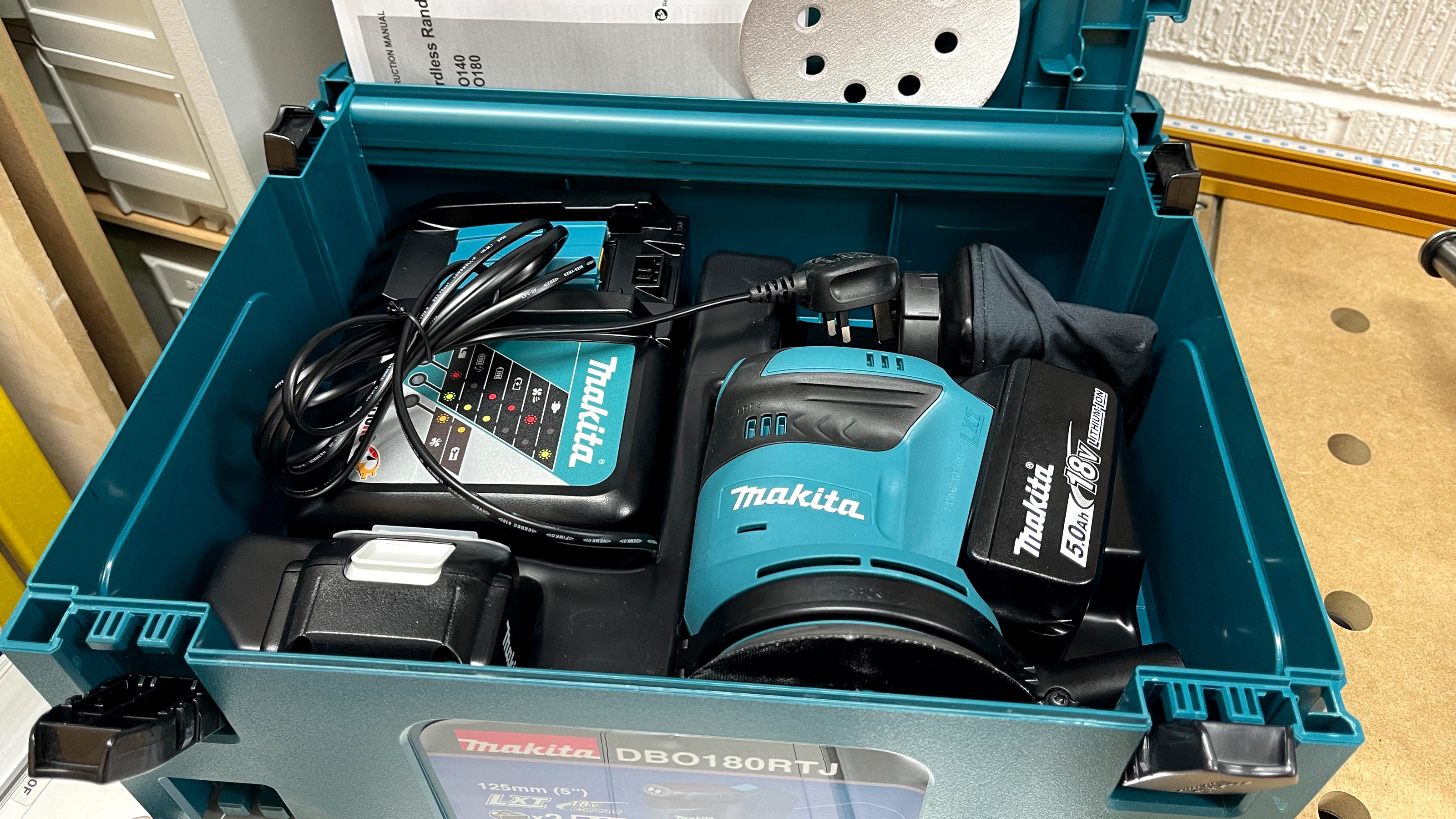
Good build quality and good dust bag performance
Build quality is good and typical of the ubiquitous Makita blue and black tools. It feels solid enough that an inadvertent drop to the floor would do little damage. Perhaps the only weak spot is the plastic “skirt” which the dust bag attaches to.
This can be repositioned in one of twelve directions in accordance with your use, and in all positions, the dust port protrudes. It’s also not clear why you should need a screwdriver to reposition this – it seems a simple friction toggle would have been much easier and more practical.
Speaking of the dust bag, it performed well which surprised me. I expected there to be much more dust in the air and around the tool when using the bag but it was actually not substantially different when attached to an extractor.
Whether that’s because the bag works well or perhaps the machine extraction isn’t so good was hard to tell, but given that using an extractor renders the sander not quite so cordless, good dust bag performance is a definite plus. Of course, it’s wise to never rely solely on on-the-tool dust extraction capabilities and you should always also use a face mask when sanding.
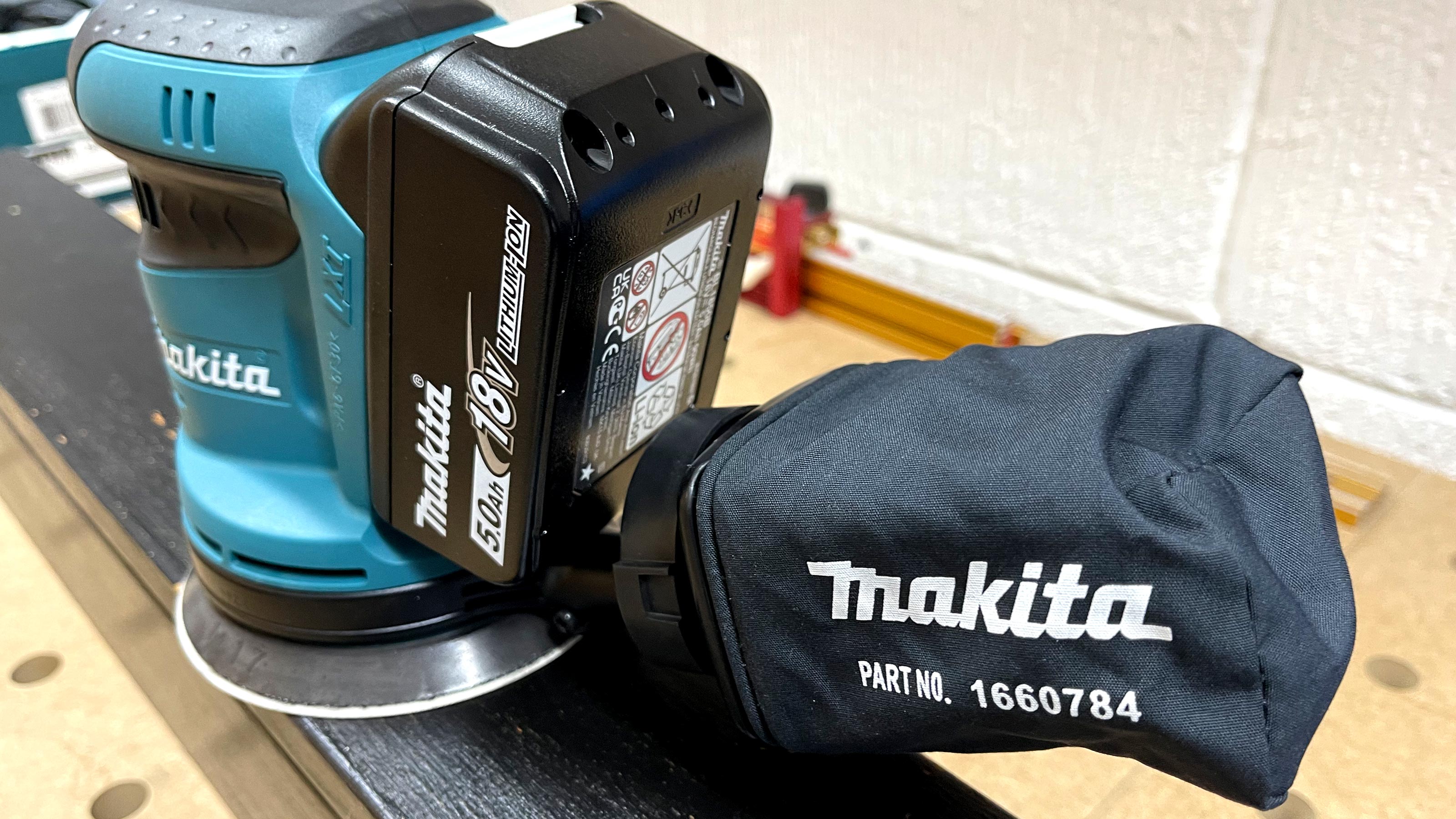
A quick charging sander that's smooth and comfortable to use
Battery life was also surprisingly good. The kit is supplied with two 5.0ah Makita BL1850B Li-Ion LXT Batteries and a DC18RC 14.4V to 18V Li-Ion Charger. As the charger is capable of charging a BL1850B battery in 45 minutes, it’s extremely unlikely that you’ll run out of battery power assuming you have mains electricity for the charger to operate.
I had purchased a second-hand table just for the solid oak to use in other projects, but the previous owners had painted the legs black. Removing this black paint was quite straightforward with the supplied 120-grit sandpaper, and the sander set to the middle-speed – it didn’t take long and and the sander was extremely smooth and comfortable in use.
Sanding fine filler on a wall with a 220-grit sandpaper and the sander once again at middle-speed was also drama-free. It would be fair to say that keeping the sander flat to the wall is more difficult and tiring than sanding horizontal surfaces and I found myself changing the angle of the sander in the hand quite a lot to find a comfortable position.
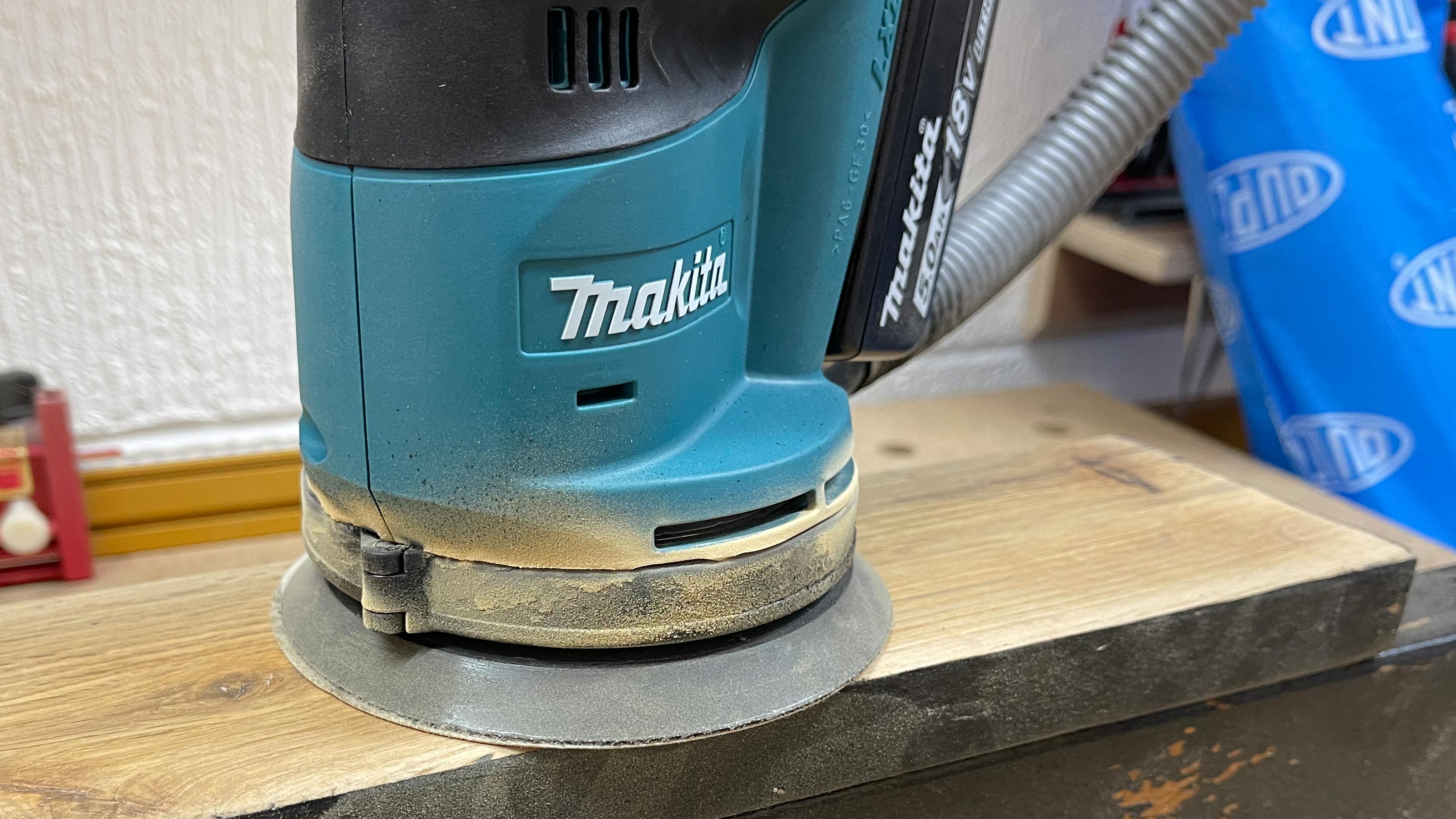
A pro orbit sander for DIYers and plenty of accessories
Makita sell a range of accessories including hook-and-loop type abrasive discs (sandpaper), sponge pads, felt pads and wool pads for polishing, a dust box, paper filter bags and various batteries and chargers. It’s a shame the kit comes with only one 120-grit sandpaper disc – I would have liked to have seen a selection of different grits provided, and perhaps 2 or 3 of the common ones.
Although this is a tool aimed at experienced DIYers and professionals, its simple operation means it can also be used successfully by beginners. Like any other cordless tool using a common battery platform, use of the BL series batteries in this kit opens up a huge range of other tools available as “bare” units without batteries and chargers for those who already have them. Equally, this sander as a “bare” unit could be the ideal addition for someone that has already invested in another tool as a kit version.
The value of kits like this is in the battery platform you are buying into. If you’re only looking for a sander and can’t see yourself getting other cordless tools that use the same batteries and chargers, this will be an expensive purchase. But if it’s the first of a few purchases, or you’re buying the “bare” version, it’s competitively priced.
The sander is easy to use and easily cleaned with no recommended maintenance required, but clearly the key advantage is that it is cordless. This makes using it outside of the home or workshop a lot simpler, especially on horizontal surfaces. Corded versions of sanders with similar capabilities could be some 300-500g lighter though, so if you’re predominantly working on vertical surfaces or overhead, it may not be the best choice.
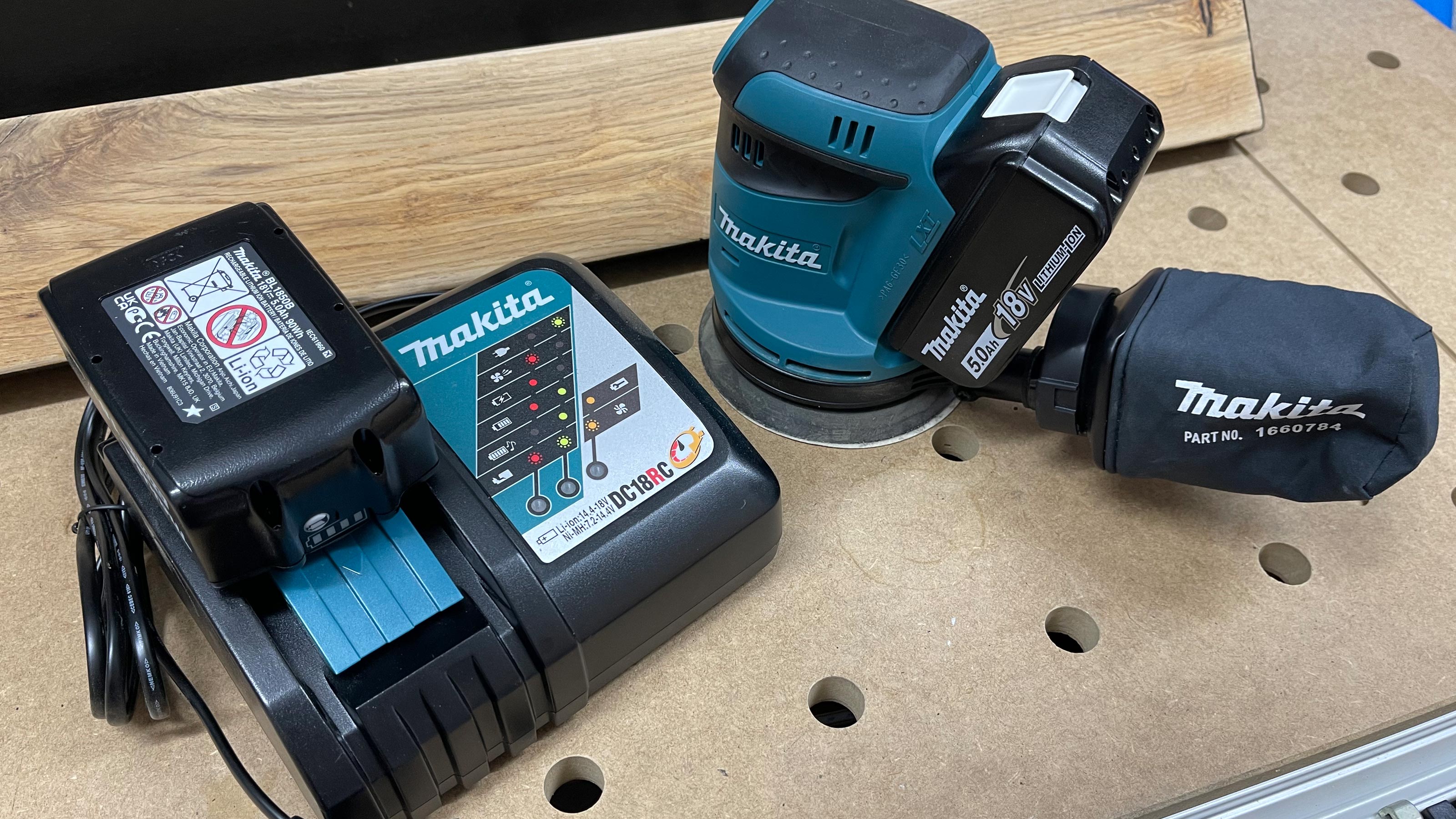
About our review — and reviewer
Garry is an independent product tester, bringing decades of skill and experience in multiple trades to the art of authentic, real-world reviews. A technology geek, tool addict, and soon-to-be Passivhaus self-builder, he lives with his family in Worcestershire.
We are not given any compensation by Makita for our reviews, but may be allowed to keep the product for long term testing meaning we can test it over a greater length of time, and update this review if required.
Garry is an independent product tester, bringing decades of skill and experience in multiple trades to the art of authentic, real-world reviews. A technology geek, power tool addict, and soon-to-be Passivhaus self builder, he lives with his family in Worcestershire. He also has a passion for sustainability and plotfinding.
